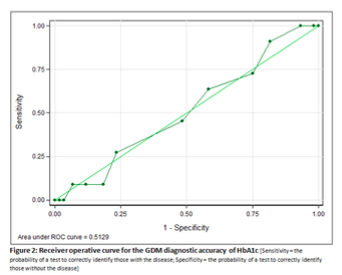Oral Presentation Australian Diabetes in Pregnancy Society 2018
Comparison of the Oral Glucose Tolerance Test and HbA1C as a diagnostic screening tool for Gestational Diabetes (#27)
Introduction
Gestational diabetes (GDM) has a strong association with adverse pregnancy outcomes therefore screening is recommended in all pregnant women.
Although it is regarded as the diagnostic tool of choice, the OGTT has a number of drawbacks and therefore the ADIPS consensus guidelines has suggested the HbA1c as an alternative screening tool for GDM.
The aim of this prospective study is to evaluate the performance of HbA1c to detect GDM in comparison to the OGTT and to assess the association between HbA1c and the risk of adverse pregnancy outcomes.
Method
100 women that attended one of three outpatient antenatal clinics were recruited.The blood samples for the OGTT and the HbA1c were collected concomitantly.
The WHO criteria was used to then compare various levels of HbA1c against, to thus determine sensitivity.
Results

The HbA1c did not perform well in distinguishing GDM cases from no-GDM based on the OGTT (AUC 0.513, 95% CI 0.333 – 0.693).
In regards to the association between HbA1c and adverse fetal outcomes, our study estimate suggests that a unit increase in HbA1c was associated with a 1.79 time increase in odds of resuscitation and higher HbA1c results were associated with smaller birth weight.
Discussion
Further research is required, especially correlating lower levels of HbA1c to GDM. The HbA1c in its current form should not be used to screen GDM as it can falsely reassure clinicians due to low sensitivity.